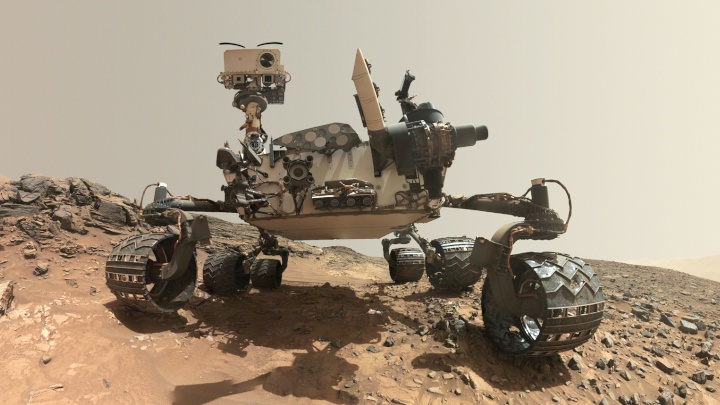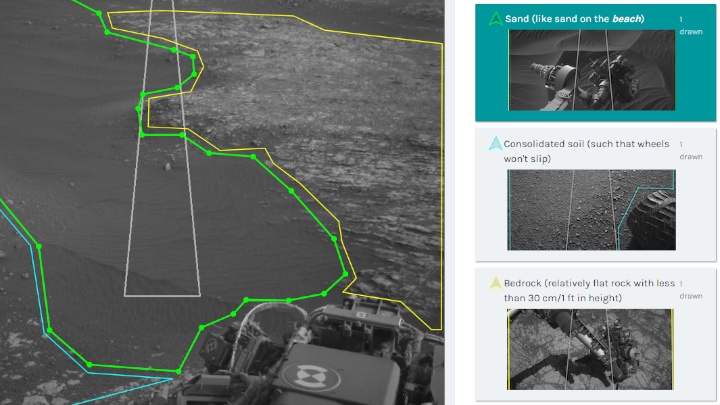Help NASA Drive Curiosity Rover
The Martian rover Curiosity needs your help. Ai4Mars web application was created to improve the algorithms of the AI driving vehicles on Mars.

On NASA's website we will find information about a program, in which each of us can become a very unusual driving instructor, as we can help in steering the Martian rover Curiosity. Tips given during the analysis of a series of photos sent from Mars will help in the development of AI algorithms controlling the vehicle, as well as in the development of orientation systems for future expeditions to this planet.
- Ai4Mars app can help Martian vehicles navigate more easily during current and future missions;
- There are already more than 8000 photos in the program's database, which are waiting to be described by Internet users.
The mission to investigate whether there were conditions for the development of life on Mars in the past was launched in 2011. Almost a year later the Curiosity rover landed on the planet's surface and started working. The vehicle is basically an unmanned laboratory, moving on six wheels. Due to the distance, the signal transmission time from Earth can reach above 20 minutes. So it's impossible to control the rover manually, it has to do a lot of work on its own. It is controlled by automatic algorithms, which are constantly being developed. In order to improve this process, NASA has reached for help from the Internet.
For this purpose the Ai4Mars browser application was developed. After launching it we will see a short introduction, which we should read to know what to do. Then it is worth to train for a while on black and white photos. When we feel that we are ready, we can start the main task. The program will then start to display pictures, where we have to mark the zones representing four types of surfaces encountered on Mars.

This corresponds to the Martian SPOC (Soil Property and Object Classificatio) algorithm, present in the work on automatic rover orientation. It differs significantly from the programs used by autonomous driving systems, for example in Tesla cars. On Mars, there are no roads, trees, buildings and similar landmarks. Everything is based on recognizing types of surface.
The rover's AI compares the camera image with fragments of images to automatically mark the area. This greatly helps mission planners to plot the route for Curiosity. That's why they need our help. The bigger the base of aptly classified samples it will have at his disposal, the easier the vehicle will orient itself on Mars surface. Currently Ai4Mars has more than 8000 photos from the planet's surface, some of them are still waiting to be classified by Internet users. Admittedly, we won't get paid for our work, but I guess it's worth helping in space exploration?
0

Author: Arkadiusz Strzala
His adventure in writing began with his own blog and contributing to one of the early forums (in the olden days of Wireless Application Protocol). An electrical engineer by profession, he has a passion for technology, constructing and, of course, playing computer games. He has been a newsman and writer for Gamepressure since April 2020. He specializes in energy and space tech. However, he does not shy away from more relaxed matters every now and then. He loves watching science-fiction movies and car channels on YouTube. He mainly plays on the PC, although he has modest console experience too. He prefers real-time strategies, FPS and all sorts of simulators.
Latest News
- Larian Studios CEO explains generative AI use in development of Divinity
- Kojima Productions celebrates its big 10th anniversary with an upgraded Ludens
- They didn't conquer TGA, but they were still very successful. Now they are thanking the fans in the best possible way
- Pawel Sasko revealed his favorite Cyberpunk 2077 ending and explained what CD Projekt Red wanted to say to players through the saddest one
- Ubisoft acquired Amazon's studio and is now in charge of a promising game that „has a real opportunity to bring something fresh and dynamic”

